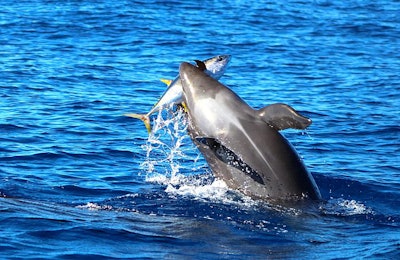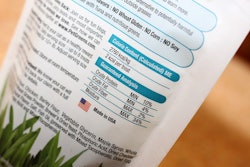
Three pet owners filed a class action lawsuit against Purina PetCare alleging that Fancy Feast cat food misleads consumers with dolphin-safe labeling. The plaintiffs claim that dolphins may indeed by harmed or killed by the tuna fishing practices used in Fancy Feast cat food’s seafood supply chain.
Fancy Feast does display a dolphin-safe logo, although not the one defined and endorsed by the United States National Oceanic and Atmospheric Administration (NOAA). The plaintiffs claim that consumers assume that any dolphin-safe logo certifies that tuna fishing methods met meet federal standards for avoiding harm to dolphins. Even if it isn’t the federal logo, tuna suppliers must still meet federal standards to be deemed dolphin-safe.
However, the plaintiffs allege that tuna in Purina’s Fancy Feast supply chain may have been caught using fishing techniques that harm, stress and sometimes kill dolphins, along with sea turtles, sharks and other animals. The plaintiffs also claim that Purina lacks means to track the provenance of the tuna, another federal requirement.
On their website, Purina PetCare states that 99% of the company’s total fish purchase in 2018 was traceable to its source and 42% was responsibly sourced. The website doesn’t mention the dolphin-safe logo.
The lawsuit alleges that one source of Purina’s fish, the Thai Union Group, uses purse seine nets and longlines to catch tuna. Longlines can hook dolphins on one of the thousands of hooks on the 40 to 80 mile long lines. The dolphins then drown. Purse seine nets close around entire schools of fish. Since tuna often school under dolphin pods, fishing vessels set their nets around dolphins, sometimes using speedboats to herd the mammals. When they close their nets, the dolphins may be unable to leap out and end up trapped as by-catch.
Purina states on their website that cat food
Because of their belief that the tuna in Fancy Feast was caught without harming dolphins, the plaintiffs claim that they paid a premium price over other cat foods. They stated that they wouldn’t not have paid the same price if the cat food didn’t have a dolphin-safe label.
The lawsuit “Lori Myers, et al. v. Nestle Purina Petcare Company” was filed in the U.S. District Court - Central District of California. The case number is 5:19-cv-00898.
History of dolphin-safe labeling on pet foods
In 1990, lawmakers passed the Dolphin Protection Consumer Information Act (16 U.S.C. §1385). The law describes the conditions under which tuna products may be labeled dolphin-safe in the United States. A tracking system of tuna’s origins is part of NOAA’s implementation of the law.
According to the text of the Dolphin Protection Consumer Information Act:
“It is a violation of section 5 of the Federal Trade Commission Act (15 U.S.C. 45) for any producer, importer, exporter, distributor, or seller of any tuna product that is exported from or offered for sale in the United States to include on the label of that product the term "dolphin safe" or any other term or symbol that falsely claims or suggests that the tuna contained in the product were harvested using a method of fishing that is not harmful to dolphins if the product contains tuna harvested.”
Biology of dolphin and tuna used in cat food
The need to protect dolphins results from a particular behavior of yellowfin tuna in the eastern tropical Pacific Ocean. The fish tend to school underneath pods of dolphins. Marine biologists believe the dolphins shield the tuna from predation when the fish swim in warm near-surface waters, according to NOAA Fisheries. Spotters on fishing vessels watch for flocks of birds that lead to pods of dolphins to catch the fish underneath them. Speedboats chase the dolphins and herd them into tight groups. The tuna stay with the dolphins during this process. The fishing vessel crew deploy a net around the concentrated tuna and dolphin group. Ideally, the dolphin escape during the backdown procedure of the net, but that requires skill by the captain and crew, along with good equipment and conducive sea conditions.
“As with any complicated procedure at sea, things can go wrong, and when they do, dolphins may be killed,” according to NOAA.
















